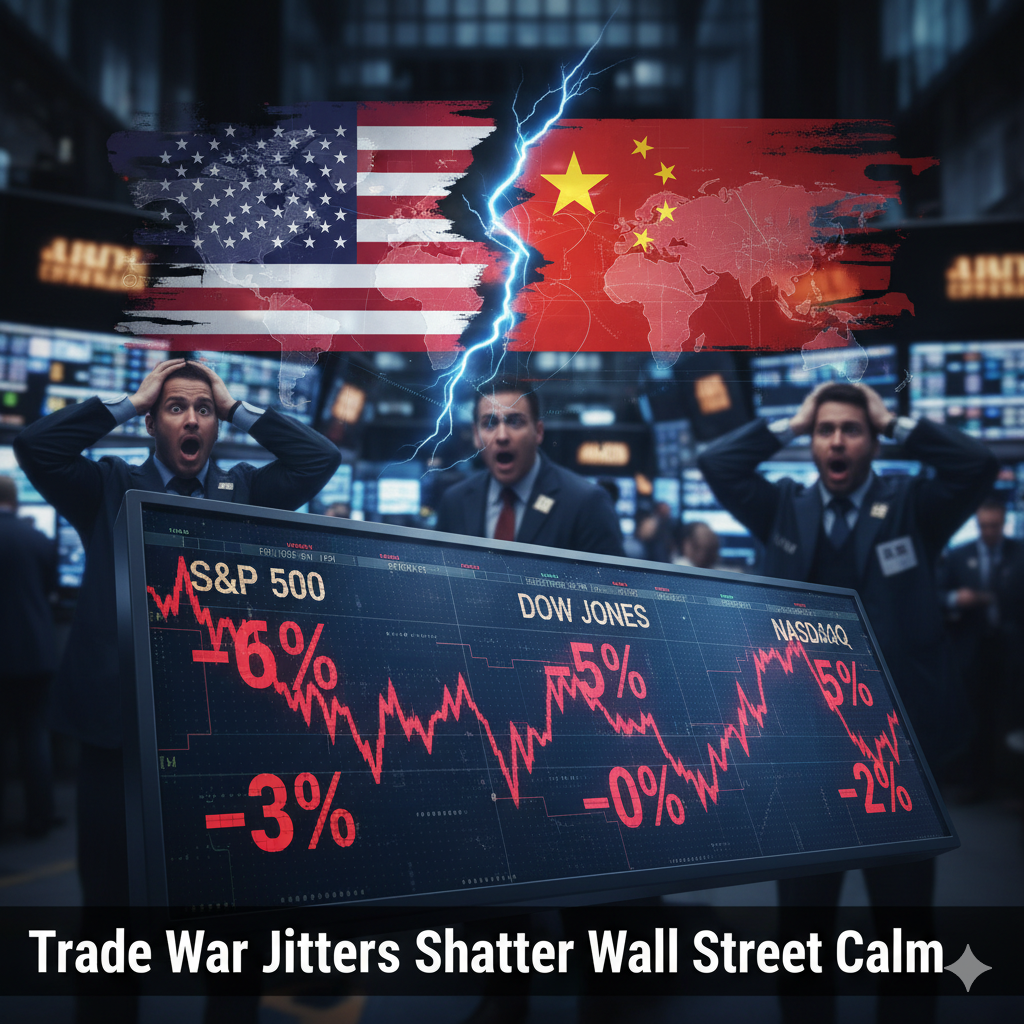Wall Street’s recent period of calm was decisively shattered as markets experienced their sharpest drop in months. The sell-off was triggered by a sudden escalation in the US-China trade conflict, sending a wave of uncertainty through the global financial system and erasing recent gains. Investors are now bracing for a new round of volatility as the world’s two largest economies renew their economic standoff.
The primary catalyst for the market downturn was a direct and unexpected move from President Trump. He announced a threat to impose a “massive increase of tariffs” on a wide range of Chinese imports. This aggressive stance was compounded by his decision to cancel a highly anticipated meeting with Chinese President Xi Jinping, a move that dismantled hopes for a near-term resolution. The declaration signaled a significant hardening of the US position and caught investors off guard, prompting an immediate flight from risk assets.
The reaction on Wall Street was swift and severe. The S&P 500, Dow Jones Industrial Average, and Nasdaq Composite all saw substantial losses, with key indices tumbling in a broad-based decline. The sea of red on trading floors reflected deep investor concern that a prolonged and intensified trade war could disrupt supply chains, increase costs for businesses, and ultimately weigh on corporate earnings and economic growth. The market’s sharp reversal indicates that the fragile investor confidence built up over recent weeks has been seriously undermined.

Nowhere was the impact felt more acutely than in the technology sector. Big Tech stocks, which have significant exposure to China for both manufacturing and sales, were the worst-hit group. Shares of major companies like Apple, Nvidia, Tesla, and AMD plunged as investors calculated the potential damage from new tariffs and retaliatory measures. Apple, for instance, relies heavily on Chinese factories for assembly and counts the country as a critical market for its iPhones. Similarly, chipmakers like Nvidia and AMD face dual risks from supply chain disruptions and reduced access to the vast Chinese consumer electronics market.
A key flashpoint for this renewed conflict appears to be China’s recent restrictions on the export of rare earth materials. These 17 metallic elements are not necessarily rare, but their extraction and processing are complex and geographically concentrated, with China dominating global supply. These materials are indispensable components in a vast array of modern technologies, from consumer electronics like smartphones and laptops to advanced military hardware, including jet engines and guidance systems. Beijing’s move to control these strategic exports has been interpreted as a direct response to US pressure, adding a new and critical dimension to the ongoing trade dispute.
Looking ahead, analysts warn that the ramifications of an extended trade war could be far-reaching, rippling well beyond the daily swings of Wall Street. One long-term concern is the disruption to global supply chains that have been built over decades around efficiency and cost optimization. As tariffs and export restrictions take hold, companies may be forced to rethink their sourcing and manufacturing strategies, a process that could take years and add layers of cost and complexity to production cycles. “Supply chains don’t move overnight,” notes Emily Chen, Chief Global Economist at Arbor Financial. “Reshoring or diversification will come with significant costs that could ultimately be passed to consumers.”
Indeed, consumers are likely to feel the financial squeeze if tariffs remain in place and key inputs become more expensive or harder to procure. From smartphones and laptops to electric cars, a wide range of goods could see price hikes, experts warn. “Businesses may absorb some costs initially, but over time, higher prices filter down to consumers in the form of more expensive everyday products,” says Robert Klein, a trade policy analyst with the Atlantic Economics Forum.
The shadow cast by the renewed trade war also stretches into the geopolitical landscape, threatening to deepen rifts between the U.S. and China and fragment the global market. Economic alliances are being tested, with some countries seeking to capitalize on shifting trade flows while others risk getting caught in the crossfire of tit-for-tat tariffs. There are fears among diplomats that trust and cooperation on broader issues—like climate change, global health, or security—could erode if economic relations continue to deteriorate.
While some optimists hold out hope for a negotiated settlement later in the year, the consensus among market watchers is that businesses, investors, and consumers should brace for increased volatility and economic uncertainty. The situation remains fluid, and the stakes—for Main Street, Wall Street, and the wider world economy—could hardly be higher.

